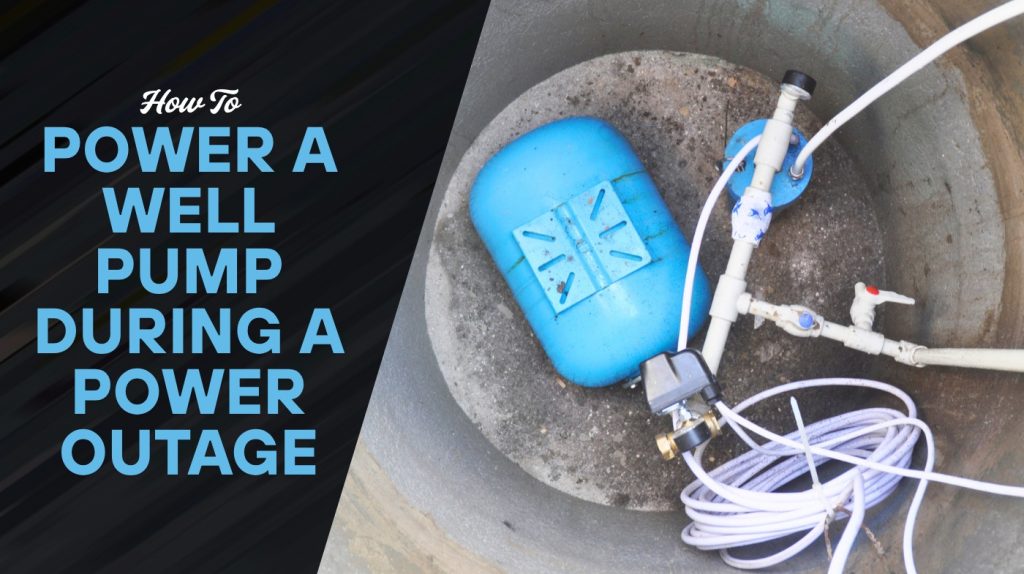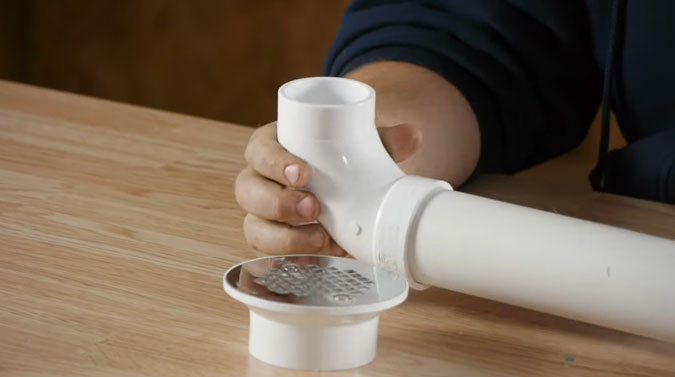Last Updated on June 11, 2025
To power your well pump during an outage, first determine its voltage and amperage to select a generator that handles both running and starting watts safely. Use a properly sized circuit breaker and professional wiring installation to avoid hazards.
Alternatively, consider battery backups or solar systems for clean, reliable power. Always reset breakers and prime the pump when power returns to restore flow. For detailed setup steps and preventative measures, you can explore further options and best practices.
Key Takeaways
- Use a backup generator sized to handle the pump’s starting surge wattage for reliable power during outages.
- Install a battery backup system with deep cycle batteries to provide automatic, clean power for short durations.
- Consider solar power setups with panels and batteries for sustainable, fuel-free well pump operation.
- Reset the pump’s circuit breaker and pressure switch to “auto” after power returns to restore water flow.
- Maintain a fully pressurized bladder tank and practice water conservation to minimize dry well risks during outages.
Assessing Your Well Pump’s Power Requirements
Before you select a backup power source, you need to assess your well pump’s power requirements accurately. Most submersible pumps operate at 230–240 volts single phase and require a 2-pole circuit breaker.
Residential pumps may run on 120V, but 240V setups are more efficient, drawing roughly half the amperage for the same horsepower. Typical household pumps range from 1/2 to 1 HP, with wattage between 500 and 2500 watts, depending on voltage and load.
Calculate wattage by multiplying volts by amps; for example, a 1 HP pump at 240V draws about 8–9 amps, equating to roughly 1500–2000 watts, including startup surge. Remember that the circuit breaker size reflects the pump’s starting current, which can be significantly higher than its running current.
Proper circuit breaker sizing (15–25 amps) and appropriate wiring gauge ensure safe operation. Confirm these specifications before proceeding to backup power selection.
Additionally, understanding how voltage fluctuations can impact pump performance helps in choosing a reliable power backup system.
Selecting the Right Backup Generator
Accurately determining your well pump’s power needs sets the foundation for choosing a backup generator that matches those requirements.
Start by calculating both running and starting wattages to ensure your generator can handle surge loads safely. Approximately 15 million U.S. households rely on private wells for drinking water, highlighting the importance of reliable backup power.
Generators with features like automatic voltage regulation help maintain consistent power output, protecting your pump from damage. Calculating your well pump’s running and starting wattages ensures your generator handles surge loads safely.
Consider these points:
- Match generator voltage and horsepower ratings precisely with your pump specifications.
- Select a generator with peak wattage exceeding the pump’s starting surge by a safe margin.
- Choose fuel type based on availability, storage, and reliability during outages.
- Ensure professional installation with transfer switches and code-compliant wiring to prevent hazards.
Avoid oversized units to reduce fuel waste and undersized models to prevent damage. Regular maintenance and compatibility with your pump’s motor controls further guarantee safe, efficient operation during power outages.
Alternative Power Solutions for Well Pumps
When the main power source fails, alternative power solutions guarantee your well pump continues operating safely and efficiently. Battery backup systems activate automatically, supplying clean, quiet power for short durations without fuel storage risks.
Regularly check the circuit breaker to ensure the electrical panel and breakers are functioning properly during outages. Installing a deep cycle marine battery as part of a battery backup system can provide reliable emergency power for your well pump.
Solar power systems use panels and batteries to provide sustainable energy day and night, ideal for remote sites but with higher upfront costs. Manual hand pumps offer a reliable, fuel-free method to access water mechanically, perfect for emergencies but limited by physical effort and volume.
Bulk water storage tanks store potable water as an interim supply during outages, requiring regular maintenance. For maximum reliability, hybrid systems combine these methods, reducing single-point failure risks.
Always consult a professional to design and install solutions tailored precisely to your well pump’s power requirements and local conditions.
Steps to Restore Power and Water Flow After an Outage
Although power may be restored to your home, you’ll need to verify that your well pump is receiving electricity and functioning properly before water flow resumes.
Start by confirming power restoration and checking the well pump’s circuit breaker; reset it if tripped. Next, locate and reset the pressure switch to “auto,” ensuring the pump activates and pressure stabilizes between 20-30 psi.
If the pump fails to draw water, prime it by refilling with water to remove air locks, as priming removes trapped air, preventing water flow.
Finally, manage valves by closing the main valve at the pressure tank, inspecting connections for leaks, then gradually reopening the valve to safely rebuild pressure.
Strategies to Prevent Dry Wells During Power Interruptions
Since power interruptions can abruptly halt your well pump’s operation, implementing strategies to prevent dry wells is essential for maintaining water availability.
Start by ensuring your bladder tank is fully pressurized before outages to sustain water pressure. When power goes out, the pressure switch trips due to decreased air pressure in the bladder tank, preventing the pump from restarting automatically.
Install a reliable backup generator to power your pump during interruptions. Practice water conservation to reduce demand, and consider integrating rainwater harvesting systems as alternative sources.
Regular cleaning and inspection help prevent debris buildup that could impair pump function during outages. Regularly inspect and maintain pump components to avoid malfunctions that could worsen outages.
Upgrade to electronic pressure switches for automatic pump recovery post-outage. Develop an emergency water access plan that includes stored water supplies and alternative sources.
Monitor aquifer levels consistently to anticipate shortages. These targeted measures enhance system resilience, minimizing the risk of dry wells and ensuring safe, continuous water supply during power disruptions.
Frequently Asked Questions
How Often Should I Test My Backup Generator for Well Pump Use?
You should test your backup generator monthly to guarantee reliable well pump operation during outages. Perform tests at a minimum 30% load for at least 30 minutes, following NFPA 110 standards. Document date, duration, and load conditions each time.
Conduct extended run tests every 36 months, lasting four hours at actual or 30% nameplate load. Regular testing identifies issues early, maintains safety, and guarantees your generator is ready when you need it most.
Can I Connect My Well Pump to a Home Battery Storage System?
Yes, you can connect your well pump to a home battery storage system, but you must guarantee compatibility with your pump’s voltage and amperage requirements. Most pumps need an inverter to convert DC battery power to AC.
Account for the high startup surge by sizing your inverter and battery bank accordingly. Use proper wiring, a charge controller, and a transfer switch for safe, reliable operation. Regular maintenance and testing will keep your system ready and safe.
What Are the Noise Levels of Different Backup Generators?
You mightn’t realize it, but generator noise can impact your comfort and safety. Portable generators often reach 70-80 dB—about as loud as a vacuum cleaner.
Inverter generators run quieter, typically 50-60 dB, similar to a normal conversation. Standby generators fall between 45-60 dB, making them less intrusive.
Are There Specific Permits Required for Installing Backup Generators?
Yes, you typically need specific permits to install backup generators. These may include general permits, construction permits before installation, and operating permits after installation.
Some jurisdictions offer permit by rule or exemptions for small or emergency generators, but you must adhere to local zoning, clearance, and air quality regulations. You’ll also need to submit site plans, electrical diagrams, and possibly pay inspection fees to guarantee safe, compliant installation.
How Do I Safely Store Fuel for My Backup Generator?
You might worry about fuel storage risks, but you can manage them safely. Store fuel in approved, explosion-resistant containers on stable, non-combustible surfaces away from ignition sources. Keep tanks in cool, ventilated areas far from living spaces to prevent fumes buildup.
Add stabilizers to maintain fuel quality and rotate supplies regularly. Always follow local regulations, label containers clearly, and secure storage areas to guarantee safety and compliance.
Beyond the Basics: Explore Setup Tips and Prevention Strategies
Power outages impact nearly 40% of rural households relying on well pumps, making backup solutions essential. By accurately evaluating your pump’s power needs and choosing the right generator or alternative energy source, you can maintain water flow safely during outages.
Always follow manufacturer guidelines and safety protocols to prevent damage or injury. Preparing in advance not only protects your water supply but also ensures your household remains functional and secure when the grid goes down.


